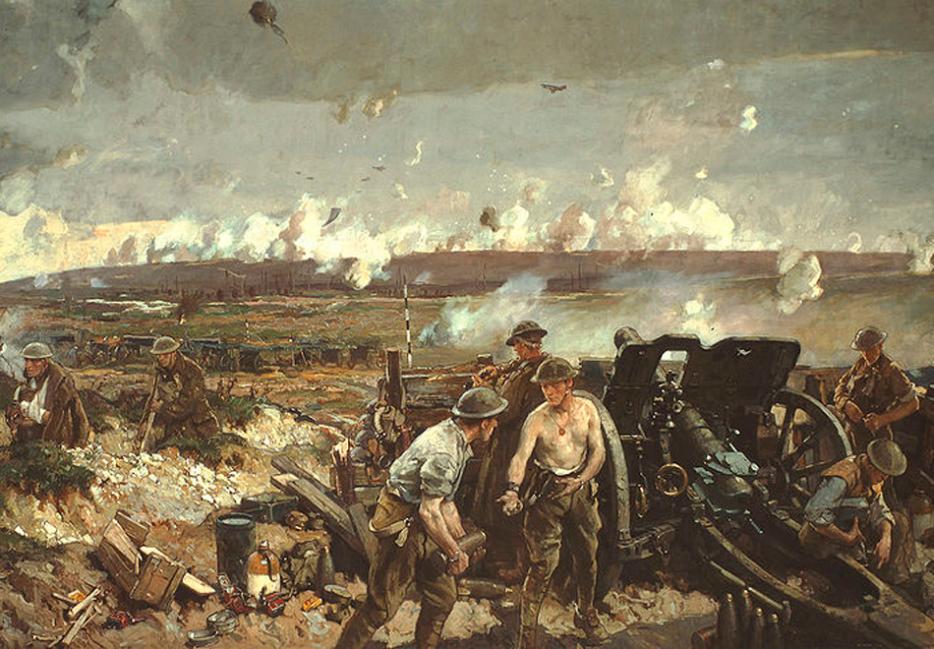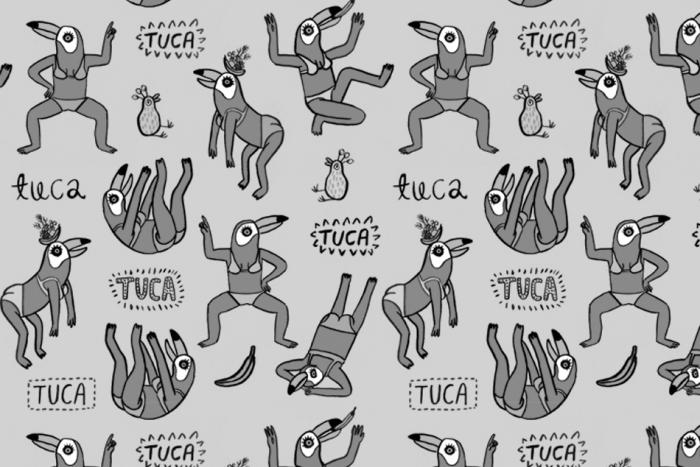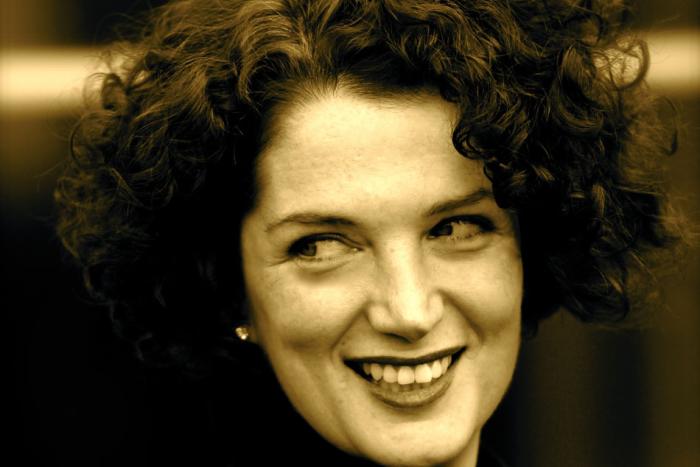You learn a few things when you take the tour of Vimy Ridge, as we approach the centenary of those two days in April 1917 that did so much to give Canadians a sense of themselves as a nation. You learn that these trenches through which the tour guide takes you were actually dug by the Brits, who were here a year or so earlier, when they tried and failed to win the ridge. You learn that, for the French who live around here, the memorial is a place to walk your dog—that the paths among the craters created by the thousands of shells both sides rained down on the men here, pounding them into the soil that to this day sits pockmarked, infused with bones and blood of hundreds of Canadians and Germans, are a pretty place to go for a jog. You also learn that the Germans were not in fact the enemy but, rather, the opponent. That’s the word my guide used, a few times, when talking about what happened here.
I asked her, a student from Ottawa on a plum four-month work term, about the word. Was the choice intentional? Yes. I asked her what term she used in French. She had to fast-forward through the script in her head—funded, approved, and presumably mandated by the Canadian government: “L’opposition.” Just two sides, each with a point.
Fifteen years ago, when I took this tour for the first time, the Germans were the enemy. They were certainly the enemy when the 18,283 (mostly) boys died fighting them 97 years ago, whose unmarked graves this monument stands for. But the last of the survivors of Vimy and the other battles died a few years ago. Arras, the Somme, Ypres, Passchendaele, all within an hour’s drive of here, where 60,000 Canadians died among 9 million of their allies. Canada has now apparently decided to let bygones be bygones.
In the lead-up to the centenary, the Vimy Foundation is trying to get the Ministry of Veteran Affairs to help fund an education centre here, something along the lines of those the French government and others have installed in Arras, around the Wellington Quarry, dug into the chalk by New Zealanders, the spot from which the Allies attacked that same morning, April 9, 1917, and where locals hid from the shelling that ensued. According to Chris Sweeney, chair of the Vimy Foundation’s 2017 committee, the French and Belgians have been planning their centenary projects for years.
Later, I ran into Julian Fantino, the minister responsible, on the steps of the monument after the memorial ceremony—it was his first trip to Vimy. I asked him about plans for the anniversary. He said they were working on it. I asked him how far along it was. He said they were working on it. I asked him what sort of budget the government had devoted to it. He said they were working on it. I asked him about the Vimy Foundation’s education centre idea. “The Vimy Foundation and the Ministry of Veteran Affairs’ education centre,” he corrected me. Was that on schedule? He said they were working on it. Then he had to run along. His handler gave me some poppy pins.
I wonder if the centre—should it be built—will teach the inevitable visiting school groups that the Germans were simply our opponents, people who just happened to be on the other side of the ridge, who, through an unfortunate set of political circumstances, were shooting at us. And I wonder what this does to the very concept of the enemy, and of war.
I’m no fan of either, and you can certainly argue about which conflicts warrant designation as wars, or whether these or those people should be considered enemies. But there do seem to be circumstances in which such terms apply—when they are, in fact, necessary. Say, for example, when the Germans marched across the French and Belgian borders with aggressive, expansionist intentions in 1914.
And what about this monument, a fantastic, moving piece of architecture erected in 1936 to commemorate those who died here? Surely this and others like it across the country, the UK, and the US are not just marking five million untimely deaths, but honouring them for having died for something, and against something else—for co-operative peace against aggressive war, perhaps. “Ils ont choisi de mourir pour la liberté,” one monument here says.
Governments declare wars, and justify the deaths they bring by saying there’s something worth fighting for. True, sometimes countries go to war for no very good reason; recently, you could make an argument for putting Vietnam and Iraq into that category. On their monuments, it’s right that there be slogans that say those being memorialized died for their country, as opposed to a particular principle, like liberty. You could argue the monuments of these wars are more purely jingoistic than something like Vimy, or the roads throughout Nord Pas de Calais and Normandy named for Canadian, British, Polish, and American soldiers who died in both wars over here—tools, even, to ensure continuing interest among the soldier class for the next war.
But the First World War is not one of those wars. Popular, academic, and official opinion still holds that it was a just war. Too many dead, certainly—far too many. But not for nothing.
So, unless Fantino and Harper have quietly come to some conclusion they’re not telling us about, we can assume this change in official language at Vimy is the result of some ill-considered, pro-pan-European attempt at inoffensiveness—the introduction of some contemporary concept of relativity into an arena in which, if admitted, all war becomes idiosyncratic and all war deaths meaningless. In that case, these statues and museums should take on the timbre of the Holocaust memorials, actively indicting the nations, governments, politicians, and generals who killed all these men and women, regardless of affiliation.
But what of the Holocaust? What effect might this new tack have on the ways in which we remember the Second World War? I spoke to Marcel Diologent, the vice president of the August 19, 1942 Memorial Museum in Dieppe. He was 13 1/2 that day, and remembers seeing the Germans shooting, and the bodies of Canadian soldiers. He points to the steps just inside the old Italian cinema that houses the museum, and tells me Canadians, bleeding, sat there, right there, hiding from the bullets. Having just come from the battlefields and memorials of the previous war, and seeing a portrait displayed of the German commandant from that day among those of other veterans whose pictures were taken for the 50th anniversary in 1994, I asked him how he felt about calling Germans opponents.
The portrait, he said, was history. As for the rest of it, he told me a little story about some commercial collectors who staged a show in Dieppe a few years ago and displayed, among other things, a German flag, symbol of the occupation.
“For the younger generation,” he said, “well, Why not?, they may say. What does it matter? But for me, my generation: no, never.”
On a hill overlooking the beach, there’s an old German pillbox, a so-called Tobruk. There are a couple of teenage boys sitting on it together taking in the view, their bikes leaning up against the rail. It’s a sunny April day, and there’s no evidence of the battle left on the pebble beach, of the 913 Canadians killed, the 586 wounded. Angela Merkel and Michael Ballack seem okay. Christoph Waltz was good in Django Unchained. And anyway, our guys did bad stuff, too. We killed lots of them. Who’s to say who the bad guys were? Were the Germans in the 1940s any worse than the Germans of 1914-1918, or the Prussians of 1870? Are all wars equal, and equally incomprehensible, mattering only to those who fought them? Or can we learn from them, learn to tell a just war from an unjust one, that human sacrifice can be meaningful or meaningless as a result, and that people and nations can go from being enemies to friends without the past having to be reconditioned to make it all fit?






